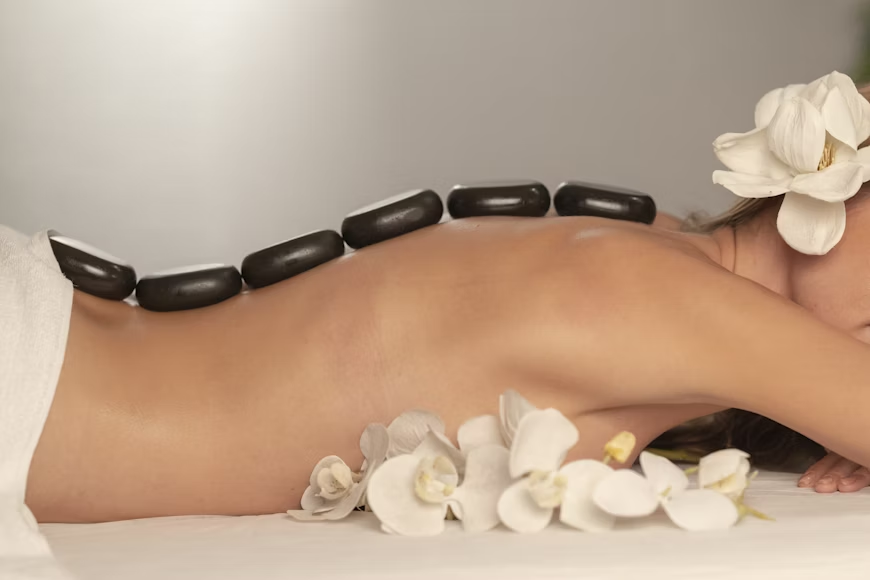Living with chronic pain can be exhausting since it isn’t just a physical sensation but a phenomenon that affects your mood, sleep, productivity, and overall well-being. Fortunately, while many people heavily rely on medication, it is scientifically proven that massage therapy is one of the most trusted methods for relieving chronic pain.
Without further ado, we’ll explore how massage therapy helps relieve chronic pain, the best techniques backed by research and experience, and how to choose the right type of massage for your needs.
Keep Reading!
- How massage therapy helps relieve chronic pain
- Best massage techniques for chronic pain relief
- What science says about massage and chronic pain
How Massage Therapy Helps Relieve Chronic Pain
Different scientific research has proven that, alongside the use of medication, massage therapy remains an integral factor for the overall well-being and pain relief. Below are some of the scientific explanations on how it helps in pain relief:
- Improve Blood Circulation: Massage therapy enhances blood circulation by making oxygen and nutrients reach sore tissues to speed up the healing process.
- Reduce Muscle Tension: Engaging in regular massage therapy sessions can help loosen tight muscles and break down knots (trigger points)
- Stimulate the Nervous System: Massage can trigger the release of endorphins (the body’s natural painkiller) to stimulate the nervous system of the body.
- Improve Flexibility and Movement: A continuous massage session can help you restore mobility and reduce stiffness in your joints and muscles.
- Reduce Stress Hormones: Among many things, regular massage can increase oxytocin, a hormone that promotes relaxation and is associated with bonding and a sense of calm.
Best Massage Techniques for Chronic Pain Relief
Not all massages are the same. Each massage technique is designed for its unique benefits depending on the type and cause of pain. Here are the top 6 different types of massage for chronic pain:
1. Swedish Massage
This massage technique uses long, gentle strokes and kneading motions with the palm and fingers to increase blood flow and relax muscles. It’s ideal for beginners or people with mild chronic pain, since its application isn’t intense but soft and gentle.
2. Deep Tissue Massage
Compared to Swedish massage, deep tissue massage uses higher pressure or forceful strokes to target the deeper layers of the muscle and fascia. It can release long-term tension, improve posture, and break down scar tissue that may be contributing to pain.
3. Myofascial Release
This massage technique focuses on releasing tension in the fascia, the connective tissue around muscles. It helps to restore movement and reduce pain caused by restricted fascia. Importantly, it’s best used to correct fibromyalgia, chronic pain, and muscle tightness.
4. Trigger Point Therapy
Unlike other massage therapies, trigger point therapy focuses on specific “trigger points” in the body that refer pain to other areas of the body. It’s highly effective for localized pain relief and tension release if performed by a professional massage therapist.
5. Thai Yoga Massage
Thai yoga massage is a holistic approach to relieving muscle tension. This technique involves rhythmic pressure, stretching, and acupressure points to balance energy flow, reduce stiffness, and enhance flexibility.
6. Hot Stone Massage
This technique involves placing heated but not too hot stones on key points of the body to relax muscles and promote blood flow. The warmth helps soothe chronic pain and encourages overall relaxation.
What Science Says About Massage and Chronic Pain
Several studies have shown that regular massage therapy can significantly reduce pain intensity and improve function in people with chronic conditions like arthritis, fibromyalgia, and lower back pain.
Significantly, a review published in the Pain Medicine Journal found that massage therapy can be as effective as some traditional pain management approaches, especially when combined with exercise and stress reduction techniques.
Another pragmatic randomized research conducted by Harald Walach, Corina Guthlin, and Miriam Konig proved the efficacy of massage therapy in relieving chronic pain, anxiety, and depression.
In essence, massage therapy can be used to correct any chronic pain in your body, and there are several massage techniques available for any pain conditions you may have.
FAQs
1. How Often Should I Get a Massage for Chronic Pain?
When it comes to chronic pain, consistency matters. Experts suggest starting with a session per week for the first month, then adjusting to once every two to three weeks as symptoms improve. However, make sure you listen to your body and communicate openly with your therapist about pain levels or discomfort.
2. What type of Massage is Best for Chronic Pain?
While most people claim that deep tissue massage is the best massage technique for chronic pain, you have to understand that other massage techniques are also recommended depending on your pain experience and intensity.
3. When to Consult a Professional
While massage can help with chronic pain, it’s important to consult a doctor if you have severe pain, nerve damage, fractures, or any underlying medical conditions.
Conclusion
Massage therapy is more than just a luxury; it’s a proven natural way to manage chronic pain, improve movement, and enhance overall well-being. Whether you have back pain, muscle soreness, or leg pain, there’s a technique out there to help you feel better and live pain-free.
Are you in Dubai and in search of a touch of professional massage therapy? You don’t have to search any further. Consult Nooora Beauty Concierge today and book a session to have a comfortable and effective massage experience.












